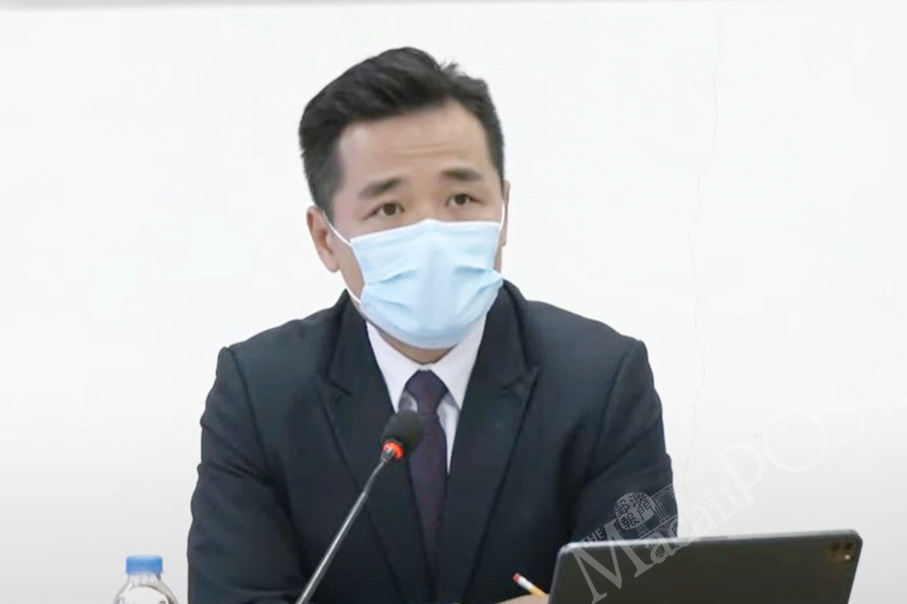Commentary by Tony Wong
Public works officials’ recent decision to shelve their original proposal of building a thoroughfare and an elevated walkway, which would have initially required the possible relocation of 10 old trees in Taipa, is in line with the local government’s commitment to its statutory obligation to protect Macau’s cultural and natural heritage.
The 10 formally protected Ficus rumphii banyan fig trees, also known as Mock Bodh Trees, are located on Caminho das Hortas (菜園路) in Cheok Ka Village(卓家村).
There are currently 645 old trees that are statutorily protected, i.e., they are on the government’s official old-tree protection list.
Considering the government’s statutory duty is to ensure the protection of listed old trees by not relocating or even felling them except under very special circumstances should be a no-brainer, but could have happened last year when the government initially appeared to be about to relocate the 10 trees.
How it all started
The predicament originated with a meeting* of the government-appointed Urban Planning Council (CPU) in March last year when public works officials proposed to relocate the 10 old trees in Cheok Ka Village to make way for the planned construction of a new thoroughfare.
The protection of old trees is regulated by Article 106 of Macau’s Cultural Heritage Protection Law, which came into force in March 2014.
While the Cultural Affairs Bureau (IC) is tasked with enforcing the Cultural Heritage Protection Law’s regulations on cultural-heritage structures and intangible cultural heritage, the law’s regulations on protecting old trees are to be enforced by the Municipal Affairs Bureau (IAM).
As pointed out by IAM officials during the CPU meeting in March 2022 when they clearly opposed the then proposal to relocate the 10 old trees, all officially-listed old trees, according to the Cultural Heritage Protection Law, are barred from being relocated or felled except in the case of “major public interest”.
The Cultural Heritage Protection Law defines protected old trees as those that are officially listed because they are older than 100 years, or because they are valuable, rare, or unusual in shape, or because they are of special historical or cultural significance.
During the CPU meeting in March last year, the public works officials underlined the need to build the proposed thoroughfare as it would become a new “arterial road” for Taipa and insisted that there was no suitable alternative location for the proposed thoroughfare, while the IAM officials insisted that the relocation of old trees would entail a very high risk to their survival.
Since the meeting in March 2022, the fate of the 10 old trees had remained uncertain for over a year until public works officials finally announced their new decision last month, which one could regard as the government’s reassurance that the 10 trees will stay where they are.
New decision
More specifically, Secretary for Transport and Public Works Raimundo do Rosário told lawmakers during a Q&A session last month that the government had decided to shelve its plan of extending the elevated walkway along Avenida de Guimarães (基馬拉斯大馬路) in central Taipa that was initially planned to go through the area where the 10 old trees are situated, with the objective of leaving the trees in situ.
Rosário said last month that public works officials had still been unable to come up with a solution that would enable the construction of the extended skywalk without affecting the 10 old trees.
A few days after Rosário’s remarks, Lands and Urban Construction Bureau (DSSCU) Director Lai Weng Leong told reporters that the government had decided to shelve its original plan of building a new thoroughfare in Cheok Ka Village, as had been proposed by public works officials during last year’s CPU meeting. Lai said the point was to leave the 10 old trees where they are.
In addition to being “in the major public interest”, according to the Cultural Heritage Protection Law, officially-listed old trees can only be relocated or felled if the Municipal Affairs Bureau has concluded that the respective trees are posing a threat to public safety in a way that no alternative solutions to removing the threat without having to relocate or fell them are available.
Legislative issue on old-tree protection
For me, the issue raises some questions. What types of circumstances can and should be regarded as being of “major public interest” stipulated by the Cultural Heritage Protection Law’s Article 106 that can green-light the relocation or removal of officially-listed old trees? Does the construction of a new thoroughfare or an elevated walkway constitute a case of “major public interest”, outweighing the protection of listed old trees?
Cultural-heritage protection activists and commentators have pointed out that the issue highlighted the fact that the protection of old trees is only tackled by a single article of the Cultural Heritage Protection Law, which has a total of 118 articles, and called for amendments to the Cultural Heritage Protection Law by listing a more rigorous and comprehensive set of rules on the protection of listed old trees.
The Cultural Heritage Protection Law’s Article 106 does not list any specific public entity that has the statutory power to make a binding decision on relocating or felling listed old trees by determining that the respective circumstances involve “major public interest”.
Neither does Article 106 lay out rigorous administrative procedures for determining whether a certain set of special circumstances involves “major public interest”.
Conversely, the Cultural Heritage Protection Law stipulates statutory procedures for green-lighting the possible demolition of listed cultural-heritage buildings that are on the brink of collapse.
The Cultural Heritage Protection Law’s Article 32 stipulates that it is prohibited to demolish listed cultural-heritage buildings except for when they are on the brink of collapse, or except in the presence of special circumstances that outweigh the public interest of keeping the buildings intact.
However, according to Article 32, such exceptions green-lighting the demolition of a building can only be made provided that it is unfeasible to preserve or relocate the respective building.
Different to Article 106, Article 32 lays out statutory procedures for deciding the possible demolition of listed cultural-heritage buildings based on either of the two special circumstances. Article 32 stipulates that it is the chief executive who decides on the demolition after assessing “binding” opinions on the matter submitted by the Cultural Affairs Bureau and consulting the Cultural Heritage Council.
Such a difference may indicate the de-facto statutorily different ranking between classified cultural-heritage buildings and classified old trees listed by the Cultural Heritage Protection Law.
The law defines cultural heritage as comprising intangible cultural heritage and tangible cultural heritage that consists of classified immovable properties and movable properties.
Classified immovable properties, i.e., cultural heritage construction structures, comprise four categories, namely, monuments, buildings of architectural interest, ensembles (such as building compounds or complexes), and sites.
According to the law, classified movable properties refer to items of significant cultural value, including musical instruments, sculptures, drawings, old books and, furniture.
Old-tree protection only governed by ‘transitional rules’
This indicates that “cultural heritage” defined by the law does not include listed old trees, at least according to my personal interpretation after scrutinising the wording of the law in which the protection of listed old trees is only tackled by just one article (Article 106) in the law’s final chapter (Chapter 10) governing “transitional arrangements”.
This seems rather odd to me, considering that classified immovable properties, classified movable properties, and intangible cultural heritage are each regulated by their own chapters containing numerous articles.
Because of the issue, I am of the view that, as cultural-heritage protection activists have suggested, the Cultural Heritage Protection Law still needs a rigorous set of rules on the protection of the city’s listed old trees.
The Municipal Affairs Bureau launched its thematic website at the end of 2020 providing easy access to various kinds of information on the city’s listed old trees such as their respective species, age, photos, location, and health conditions. The launch of the website (https://nature.iam.gov.mo/OldTreesOnline), in Chinese and Portuguese, has indicated the government’s commitment to raising public awareness of old-tree protection.
Finally, without attempting to play down the importance of protecting our listed old trees, I would like to point out that Macau places quite a strong emphasis on the protection of its cultural heritage, buildings in particular, considering the legal situation elsewhere in the world, such as in Hong Kong. This can be seen, for instance, in the difference between the basic laws of the two special administrative regions, as Article 125 of the Macau Basic Law stipulates that the Macau Special Administrative Region (MSAR) government “shall protect by law scenic spots, historical sites and other historical relics as well as the lawful rights and interests of the owners of antiques”. Conversely, the Hong Kong Basic Law does not lay out similar requirements.
Moreover, I also need to point out that there are currently 159 officially-listed immovable properties in Macau, which has a population of around 670,000. In 1992, when Macau was still under temporary Portuguese administration, there were already 128 listed immovable properties in the city. Since the Cultural Heritage Protection Law took effect in 2014, 31 properties have been newly listed, raising the number of protected cultural heritage structures from 128 to 159.
* Details on the CPU meeting in March last year can be accessed at: https://www.macaupostdaily.com/article13657.html
This photo taken late last month shows several of the 10 listed Mock Bodh Trees on Caminho das Hortas in Cheok Ka Village in Taipa. – Photo: Tony Wong





